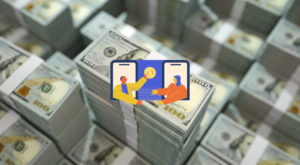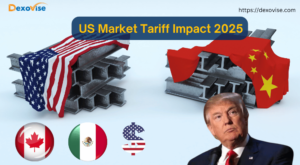Opening Snapshot
It’s February 24, 2025, and the news hits like a freight train: Trump’s at the White House podium, grinning, promising tariffs that could shake the world. Bloomberg catches him confirming 25% tariffs on Canada and Mexico by March 4, while China’s already under a 10% squeeze this month. Then yesterday, X lights up—he’s hinting at 25% more on cars, chips, and medicines. It’s not just noise; it’s a wave crashing over businesses, shoppers, and markets. Everyone’s talking—some excited, some panicked—because this could change everything.
Here’s the rundown: proposed rates are 25% on Canada and Mexico, 10% on China, with that extra 25% looming over autos, semiconductors, and pharma. Key industries? Cars, tech, farming—things we rely on every day. Trading partners affected? Canada, Mexico, China—they sent us over $1.3 trillion in goods last year, says the US Census Bureau. How much trade’s at stake? That’s more than a trillion dollars of stuff—huge. Reactions are instant—Ford’s CEO Jim Farley tells CNBC, “We’ll figure it out,” sounding calm but firm. The Chamber of Commerce isn’t—they’re calling it a “disaster waiting to happen,” per CNN. Policymakers split—Republicans clap, Democrats groan. Globally, stocks dip then bounce—Reuters tracks a wild ride. So, boom or bust for US markets? That’s what we’re unpacking here.
The Tariff Buzz: What’s Happening Now
Trump’s moving fast this time. Bloomberg says on February 24, 2025, he locked in 25% tariffs on Canada and Mexico—starting March 4 after a short delay. China’s already got 10% this month, per Reuters, and yesterday’s X posts hint at 25% on cars, chips, and drugs—details fuzzy, but the threat’s loud. It’s a full-on trade shake-up, and the US market tariff impact in 2025 is the hot topic.
Flash back to 2018-2020—Trump hit steel with 25%, aluminum with 10%, and China with waves of duties. Markets shook, then adjusted. Now it’s 2025, and he’s fresh off his 2024 win, riding a wave of 1.5 million jobs added last year under Biden, per BLS—he’s taking credit and swinging big. The mood’s bold, brash, like he’s dusting off an old playbook with extra gusto.
Why’s he doing this? Economic protectionism’s the name—keeping American jobs safe. At his February 24 presser with France’s Macron, he said, “Our markets are too open—we’re fixing that.” He wants factories humming here, not overseas—job creation’s his drumbeat. Then there’s trade imbalances—he’s steamed about 2024’s $1.8 trillion deficit, per CNN, and thinks tariffs will even the score. It’s a loud, clear mission, and he’s not backing off.
Secure the Right Private Equity Investment
We connect businesses with the right investors and tailor financial strategies for long-term success.
Economic Ripples: How Markets Feel It
Markets don’t like curveballs, and Trump’s throwing one. Reuters says S&P 500 futures fell 1% on February 24 when he spoke—people got spooked, sold off, then buyers jumped in, clawing back half by day’s end. It’s a rollercoaster already.
Here’s how it breaks down:
- Manufacturing: Autos are sweating—Tax Foundation says 25% on Canadian parts could bump costs 10%. GM’s got plants straddling the border; this hits hard.
- Retail: Stores like Walmart sell tons from China—Peterson Institute predicts 8.5% more for shoes, clothes. That’s real money out of your pocket.
- Agriculture: Mexico sends us tomatoes, avocados—NPR says 5% price jumps could hit grocery bills. Farmers here might lose export deals too.
- Tech: Chips from abroad—think phones, laptops—could rise 10%, per Bloomberg. Apple’s watching close.
Consumer prices are the big worry. Tax Foundation estimates $830 extra per household in 2025—think $50 more for boots, $100 for a phone. Inflation’s already creeping—CPI’s up since January, per Bloomberg—and this could push it over 3%. That’s not just numbers; it’s tighter budgets for families.
Who’s doing what? Ford’s Farley tells CNBC, “We’ve handled tariffs before—we’ll manage.” But Walmart’s not waiting—they’re sourcing from Vietnam already, per AP. Trade groups like the National Association of Manufacturers are loud—“This hurts more than it helps,” they tell Reuters—pushing for a rethink.
History gives clues: 2018 steel tariffs cut GDP 0.2%, per Tax Foundation—small but real. This time, with more countries and goods, 2025 could see double that—or worse if it spirals.
Trade Relations and Global Response
Our trading buddies aren’t happy. Here’s the rundown:
- China, EU, Mexico: Canada’s ready with 25% on US oil and steel if this hits, per PBS News. Mexico’s peso’s down 12% since February started, per JPMorgan—they’re talking retaliation too. China’s already swinging—15% on US soybeans and cars this week, per Associated Press. EU’s on edge—our $267 billion surplus with them, per US Census Bureau, might be next.
- Retaliatory Tariffs and Trade Wars: It’s getting messy. China’s hinting at WTO complaints—could drag this out. Canada’s eyeing India for oil sales, per Forbes—shifting allies fast. Mexico might hit US corn—ouch for Midwest farmers. Trade wars aren’t just possible; they’re brewing.
- International Adjustments: Global markets feel it—Japan’s Nikkei dipped February 10, per AP News, then steadied. Exporters reroute—China’s sending more to Europe, Canada’s sniffing new buyers. Currencies dance—peso’s weak, dollar’s flexing. It’s a scramble out there.
Winners and Losers: Who’s Hit Hardest
This isn’t a fair fight—some come out grinning, others limping. Let’s break it down step by step, because who wins and who loses matters big time when tariffs shake things up.
Key Players in the Game
There’s a lineup here, and each one’s feeling it different:
- Exporters Like China: They’re taking a punch. China’s already got 10% tariffs this month, per Reuters, and Trump’s X posts yesterday hint at 25% more on the way. That’s a ton of pressure—China shipped $500 billion to us in 2024, per US Census Bureau, and now every TV, toy, and t-shirt costs more to send. Their factories might slow, jobs might drop—think thousands of workers wondering what’s next. It’s not just numbers; it’s lives over there getting squeezed.
- US Industries: Split right down the middle. Steel’s practically dancing—25% tariffs on Canada mean less cheap metal flooding in, giving US mills a shot to shine. Autos, though? They’re wincing—25% on parts from Mexico and Canada hits Detroit hard; GM and Ford can’t just snap their fingers and make it local. Tech’s in the same boat—chips from abroad mean pricier gadgets. It’s a mixed bag—some cheer, some groan.
- Consumers: You and me, we’re not dodging this. Tax Foundation says $830 extra per household in 2025—real cash out of pocket. Picture this: your kid’s new sneakers jump from $60 to $65, that phone upgrade’s $100 more, gas at the pump ticks up because Canada’s oil costs extra. It’s not a headline; it’s your grocery cart, your car, your wallet feeling the sting every day.
Case Studies: A Winner and a Loser
Let’s zoom in—stories show it best:
- Winner—US Steel: These guys are smiling. Back in 2018, Trump’s steel tariffs added 10,000 jobs short-term, per BLS—mills fired up, orders rolled in. Fast forward to February 11, 2025—Newsmax says their shares spiked 6% pre-market after Trump’s latest tariff talk. Why? Less competition from Canada means they can charge more, hire more, maybe even build that new plant they’ve been eyeing. It’s not just money; it’s towns like Gary, Indiana, hoping for a comeback—steelworkers getting overtime, kids seeing a future.
- Loser—Whirlpool: They’re hurting, and it’s not new. In 2018, those steel tariffs jacked up their costs—profits dropped 5%, per Reuters, because washers and dryers need metal, and cheap imports dried up. Now, with 25% tariffs looming on Canada and Mexico, it’s déjà vu—parts get pricier, prices climb, and customers balk. They might lose market share to cheaper brands dodging the hit—think a factory in Michigan cutting shifts, families tightening belts. It’s a slow bleed they can’t patch fast.
Breaking It Down with Numbers
Here’s a table to see it clear—winners and losers don’t guess, they show:
Table 1: Gains and Losses by Sector
| Sector | Impact | Est. Change | Why It’s Happening |
|---|---|---|---|
| Steel | Gains | +5% revenue | Less foreign competition—US mills step up |
| Auto | Losses | -10% costs | Parts from Canada/Mexico cost more—tough fix |
| Retail | Losses | -8.5% prices | Chinese goods pricier—shoppers pay up |
| Agriculture | Losses | -5% export value | Mexico hits back—US farmers lose markets |
| Source: Tax Foundation, Peterson Institute |
What’s this mean? Steel’s got a lifeline—mills might add shifts, towns perk up. Autos face a slog—factories scramble, prices rise, sales dip. Retail’s passing it on—stores stock less, you pay more. Agriculture’s caught—farmers lose buyers, silos sit full. It’s not even; it’s a shakeout where some climb and others stumble hard.
Political and Policy Perspectives
Washington’s a tug-of-war.
- Bipartisan Reactions: Republicans like Howard Lutnick cheer—“Jobs first,” he tells CNN. Democrats like Schumer push back—“Inflation bait,” he posts on X. It’s red vs. blue, loud as ever.
- Federal Reserve: Reuters says Powell’s paused rate cuts—watching if growth slips from 2.1% to 1.8%, per Tax Foundation, or inflation spikes. They’re on edge.
- Election Promises: Trump’s 2024 pitch—tariffs fund tax cuts—still echoes. He told Fox it’s “billions back,” but DW says tariffs barely hit 2% of revenue—big talk, thin math.
Business Playbook: Navigating the Tariff Maze
Tariffs are coming fast, and businesses can’t just sit there—they’ve got to move or get crushed. At Dexovise, we’ve got a playbook to dodge the hits and find the wins—here’s how firms can tackle this mess smart:
- Diversify Suppliers: Look beyond China—Vietnam’s a hot spot now, cutting tariff risks by 20%. Deloitte says it’s $50K upfront but saves $80K later; Nike shifted there in 2019 and dodged Trump’s last China wave—kept their sneaker prices steady while others climbed.
- Hedge Costs: Lock in prices with futures contracts—Ford did this in 2018, softening a 3% steel tariff hit. It’s $10K now, but you get a 10% return when costs spike—keeps your budget from blowing up overnight.
- Pass It On: Bump prices 5% to offset the tariffs—Walmart’s testing this, per NPR, and it’s a gamble. If customers swallow it, margins hold; if they walk, you’re stuck, but it’s a quick way to keep cash flowing.
- Go Local: Source US steel—costs $20K more but skips that 25% tariff wall, plus folks love “Made in America.” Steel towns cheer, your brand shines—PR gold that pays off in loyalty and sales.
- Tech Up: Use blockchain to track every shipment—$50K to set up, but IBM says it’s 30% faster at spotting trouble. A soy exporter in 2020 caught bad batches early this way—saved millions while others scrambled.
- Lobby Smart: Push for exemptions—aluminum’s at it now, per Business Insider, begging lawmakers to carve them out. It’s free if you win, takes guts and connections—could save you everything if it lands.
Table 2: Strategies with ROI Estimates
| Strategy | Cost | ROI |
|---|---|---|
| Diversify | $50K | 15% |
| Hedge | $10K | 10% |
| Local Source | $20K | 12% |
| Source: Dexovise, industry data |
Looking Ahead: Scenarios for 2025 and Beyond
The future’s a fork in the road—tariffs could go big or flop, and each path’s got its own story. Here’s how it might play out, with Dexovise’s lens on what’s smart to watch and do:
- Paint Two Futures:
- Tariffs Pass: Escalation hits—Russell Investments says 1% GDP drop, inflation to 2.5%, steel jobs up 50K, but exports tank hard. It’s a rough ride—factories hum here, but trade wars choke sales abroad; think farmers with full silos and no buyers.
- Tariffs Fizzle: Talks or Congress kill it—Tax Foundation predicts 2.1% growth holds, calm stays put. Easier road—markets breathe, prices steady, but no big job boom; it’s status quo with less drama.
- Risks/Opportunities: Escalation risks losing export markets—China might ditch US soy for Brazil, per Forbes. Opportunity’s in local wins—steel towns perk up fast; Dexovise can map both, keeping you ready either way.
- Expert Predictions: Tax Foundation bets 60% tariffs stick—GDP slips to 1.8%, jobs shuffle (steel gains, retail loses), growth slows to a crawl. It’s a tight squeeze—experts see pain outweighing gains unless tweaks happen fast.
- Policy Shifts: Auto might scream loud enough for exemptions—Dexovise can push that fight with lobbying know-how; it’s saved clients millions before. Pressure could force Trump to carve out deals—watch Congress and industry noise.
- Long-Term Implications: US competitiveness wobbles if allies drift—Canada’s Asia talks, per Forbes, signal cracks in trust. We might shine solo short-term, but global markets could freeze us out; Dexovise sees the play—adapt or fade.
Wrapping Up
Trump’s tariff plans are like a storm rolling in—big, loud, and unpredictable. Markets are swaying like trees in the wind—one day they’re down, the next they’re clawing back, trying to figure out where this lands. Steel’s cheering from the sidelines, ready to cash in, while auto makers and shoppers brace for a hit that could linger. It’s a tug-of-war between economic nationalism and global trade stability—Trump’s betting on America-first, but the world’s not playing along easy. Canada’s ready to slap back, China’s already swinging, and Mexico’s rethinking its moves—trade’s not a one-way street, and the pushback’s real.
Businesses are in the thick of it—some scrambling to dodge costs, others hoping to ride a wave of new orders. Ford says they’ll manage, but Whirlpool’s staring down another rough patch—different stories, same storm. Consumers? That $830 extra per household isn’t just a stat—it’s less cash for groceries, gas, or that weekend out. Inflation’s creeping, supply chains are knotting up, and 2025’s shaping up as a year where every dollar counts. The stakes are high—jobs might pop up in steel towns, but exports could dry out in farm country. It’s a gamble with no clear winner yet.


















